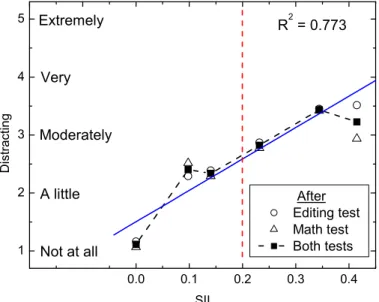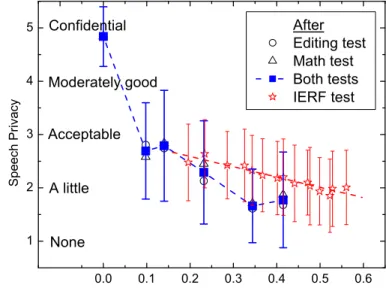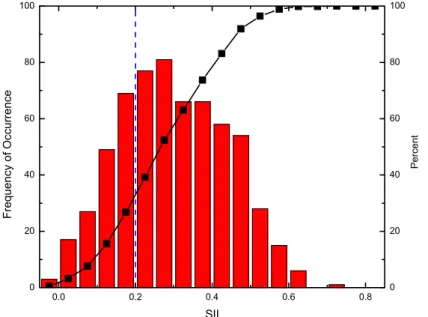Publisher’s version / Version de l'éditeur:
Vous avez des questions? Nous pouvons vous aider. Pour communiquer directement avec un auteur, consultez la première page de la revue dans laquelle son article a été publié afin de trouver ses coordonnées. Si vous n’arrivez pas à les repérer, communiquez avec nous à PublicationsArchive-ArchivesPublications@nrc-cnrc.gc.ca.
Questions? Contact the NRC Publications Archive team at
PublicationsArchive-ArchivesPublications@nrc-cnrc.gc.ca. If you wish to email the authors directly, please see the first page of the publication for their contact information.
https://publications-cnrc.canada.ca/fra/droits
L’accès à ce site Web et l’utilisation de son contenu sont assujettis aux conditions présentées dans le site LISEZ CES CONDITIONS ATTENTIVEMENT AVANT D’UTILISER CE SITE WEB.
Inter-noise 2004 [Proceedings], pp. 1-6, 2004-08-01
READ THESE TERMS AND CONDITIONS CAREFULLY BEFORE USING THIS WEBSITE. https://nrc-publications.canada.ca/eng/copyright
NRC Publications Archive Record / Notice des Archives des publications du CNRC :
https://nrc-publications.canada.ca/eng/view/object/?id=54853140-0093-40aa-9c48-9727013f3442 https://publications-cnrc.canada.ca/fra/voir/objet/?id=54853140-0093-40aa-9c48-9727013f3442
NRC Publications Archive
Archives des publications du CNRC
This publication could be one of several versions: author’s original, accepted manuscript or the publisher’s version. / La version de cette publication peut être l’une des suivantes : la version prépublication de l’auteur, la version acceptée du manuscrit ou la version de l’éditeur.
Access and use of this website and the material on it are subject to the Terms and Conditions set forth at Criteria for acoustic comfort in open-plan offices
Criteria for acoustic comfort in open-plan offices
Bradley, J.S.; Gover, B.N.
NRCC-47331
A version of this document is published in / Une version de ce document se trouve dans : Inter-Noise 2004 – The 33rd International Congress and Exposition on Noise
Control Engineering, Prague, Czech Republic, Aug. 22-25, 2004, pp. 1-6
The 33rd International Congress and Exposition on Noise Control Engineering
Criteria for Acoustic Comfort in Open-plan Offices
J.S. Bradley
aand B.N. Gover
bInstitute for Research in Construction, National Research Council, Montreal Rd., Ottawa, Canada K1A 0R6
a
john.bradley@nrc-cnrc.gc.ca b
brad.gover@nrc-cnrc.gc.ca
Abstract [081] This paper summarizes new subjective studies to better define conditions required for acceptable speech privacy and acceptable noise levels in conventional open-plan offices. Achieving both of these goals will lead to satisfactory acoustic comfort in open office environments. Ambient noise levels of about 45 dBA are judged to be most preferred in the presence of speech from an adjacent workstation, and these ambient noise levels should not exceed 48 dBA. Speech privacy is usually related to values of the Articulation Index (AI) or its replacement the Speech Intelligibility
Index (SII). Acceptable speech privacy is usually said to require SII≤0.20. Extensive speech
intelligibility tests of simulated open office conditions show that it is only below this SII value that
speech privacy is substantially improved. Together, these two criteria (background noise ≈ 45 dBA
and SII≤0.20) lead to the best possible compromise for achieving satisfactory acoustic comfort in an
open-plan office.
1 INTRODUCTION
The degree of acoustic comfort in an open-plan office is related to the combined effects of unwanted ambient noise and a desired level of speech privacy. Speech privacy is related to the levels of intruding speech sounds, from adjacent work spaces, relative to general ambient noise levels. Because of the lack of full-height partitions, adequate speech privacy is difficult to obtain [1-3]. While increasing the ambient noise level will increase speech privacy, too much noise will not lead to optimum acoustic comfort.
This paper presents a summary of new subjective evaluations of speech privacy in simulated open-plan office situations and subjective ratings of these conditions. When combined with subjective ratings of acceptable noise levels, they lead to recommendations for desirable conditions in open-plan offices to achieve an acceptable level of acoustic comfort. Comparisons with measurements in actual offices suggest that most do not meet this goal.
2 SPEECH PRIVACY RATING
The Articulation Index (AI) [4] and its replacement the Speech Intelligibility Index (SII) [5] are frequently used as measures of speech intelligibility and speech privacy. Speech privacy is related to very low speech intelligibility and typically an SII≤0.20 (or AI≤0.15) is said to provide ‘acceptable’ or ‘normal’ speech privacy in an open-plan office. However, such values seem to be the result of practical experience rather than controlled subjective experiments. Accordingly, new
experiments were carried out in which subjects’ intelligibility scores were obtained for a wide range of open-plan office conditions.
The Harvard sentences were used as the speech material. They were presented to subjects, spectrally modified by the transmission characteristics of speech propagating between cubicle type workstations. Twenty-nine subjects evaluated the 100 combinations of: 5 different sentences, by 2 inter-workstation attenuations of the speech sounds, by 2 ambient noise spectra, by 5 signal-to-noise ratios. The results were grouped in 0.05 intervals of SII values. Within each interval the distribution of intelligibility scores were determined. Figure 1 shows 5 different percentiles of the intelligibility scores in each SII interval versus the group average SII values. For example, the 50th percentile line shows how the median score varies with SII value. At the criterion of SII=0.20, the median score is 84%. Below this SII value, the median score decreases rapidly to approximately 40% intelligibility at SII=0.15. Much above SII=0.20 the median score is close to its maximum value.
0.0 0.1 0.2 0.3 0.4 0.5 0.6 0.7 0.0 0.2 0.4 0.6 0.8 1.0 Sco re SII Percentiles 90th 75th 50th 25th 10th
Figure 1. Percentiles of speech intelligibility scores in each SII interval.
To explore the distribution of scores around the criterion value of SII=0.20, Figure 2 plots the distribution of intelligibility scores about this SII value. (These results were from the combined SII intervals either side of SII=0.20). Although the lowest 25% of the subjects could understand no more than 70% of the words, the highest 25% could understand more than 90% of the words. Thus, this criterion is far from perfect privacy. Similar results were obtained in terms of AI values about AI=0.15, but speech intelligibility scores were not as well related to A-weighted speech and noise level differences. These criteria do represent a practically achievable goal [2,3].
0.0 0.2 0.4 0.6 0.8 1.0 0 20 40 60 80 100 F req uen c y , % Intelligibility Score 50% 25% 10% 75% 90%
3 SUBJECTIVE RATING OF CONDITIONS
In the same study, subjects were asked to rate their perception of the amount of speech privacy and also to rate how distracting they found the conditions, assuming that they were working in an open-plan office. These ratings were again obtained in simulated open office conditions, and after the subjects had completed a text editing or an arithmetic addition task. The scores on the tasks were not influenced by the speech and noise levels due to their short duration (2 minutes and 1 minute respectively). However, they did serve to create more realistic conditions in which the subjects did not focus completely on the acoustical conditions.
Figure 3 plots the mean ratings of how distracting the conditions were rated after each of the tasks, and the average of both scores. At the criterion value of SII=0.20, the mean score is just below ‘Moderately distracting’. A mean score of SII=0.10 would be closer to ‘A little distracting’.
0.0 0.1 0.2 0.3 0.4 1 2 3 4 5 Not at all A little Moderately Very Extremely R2 = 0.773 After Editing test Math test Both tests Di strac ting SII
Figure 3. Mean subjective ratings of how distracting the conditions were versus SII.
Figure 4 plots similar results for rating the perceived level of speech privacy. The mean rating at the SII=0.20 criterion is a little less than ‘Acceptable’. Results from a previous experiment (labeled IERF) are also included [6]. In that experiment subjects were exposed to each condition for 15 minutes and experienced several conditions over a complete working day while doing computer based tasks. They heard different combinations of simulated ventilation noise combined with telephone conversations from an adjacent workstation. Where the two sets of data overlap, there is quite good agreement in the subjective ratings of speech privacy. An SII value of approximately 0.1 would be necessary to achieve a mean score of ‘Acceptable’ speech privacy for open-plan office working conditions.
4 AMBIENT NOISE LEVELS
In the same one-day experiment referred to above (IERF), subjects were asked to rate how loud the ventilation noise was in the presence of interfering speech. The 5-point response scale was labeled: ‘Much too loud’, ‘Somewhat loud’, ‘Neither quiet nor loud’, ‘Somewhat quiet’, and ‘Much too quiet’. For the 30 subjects, the mean score for the ‘Neither quiet nor loud’ point corresponded to approximately 45 dBA. Thus, in quite realistic conditions, with various combinations of speech from an adjacent workstation and simulated ventilation noise, the most preferred ambient noise level was 45 dBA. This would therefore be an ideal masking sound level. Much practical
experience [1] leads to a second conclusion that the maximum acceptable ambient noise level (or masking sound level) is about 48 dBA. If the noise is louder than this it becomes a significant source of annoyance and causes people to talk louder, thus negating any benefits to speech privacy.
0.0 0.1 0.2 0.3 0.4 0.5 0.6 1 2 3 4 5 None A little Acceptable Moderately good Confidential After Editing test Math test Both tests IERF test S peec h P ri v acy SII
Figure 4. Mean ratings of perceived speech privacy versus SII from two experiments.
5 RECOMMENDATIONS
The results presented here lead to recommendations for both speech privacy and ambient noise levels. For a minimum degree of speech privacy the goal should be SII≤0.20. An SII≤0.15 would lead to much better speech privacy conditions, and an SII≤0.10 would lead to really good privacy conditions.
An ideal ambient noise level is approximately 45 dBA. If the noise level is much less, speech privacy will be substantially reduced. If it is much higher, the noise will be a source of annoyance and may reduce speech privacy because people will talk louder. The maximum noise level should therefore not exceed 48 dBA. Because it is important to achieve an ambient noise level within a very small range of levels, and because noise levels should also be evenly distributed throughout the office, this is usually best achieved using electronic masking noise. Of course, this also allows the spectrum, as well as the level, of the masking sound to be optimally set to maximize the speech privacy without undue disturbance.
6 COMPARISONS WITH ACTUAL OPEN-PLAN OFFICES
An examination of measurements in over 700 pairs of open-plan office workstations (cubicles) allows us to consider how frequently these ideal goals for acoustic comfort are met. These measurements were obtained from both government and private sector offices in Canada and the USA. Figure 5 shows the distribution of measured SII values in the real offices using the Intermediate Office Speech Level (IOSL) as a representative office speech level for design calculations [2,3]. Clearly most (73%) of the workstations had SII values greater than the criterion of SII=0.20. The median SII value was 0.28.
Figure 6 shows the distribution of measured daytime ambient noise levels for periods when there was no nearby source of sound. These results included some offices with electronic masking sound and others with only natural ambient noises. In this case the median value is within the desired range between 45 and 48 dBA. If we assume that we can extend this range 1 dB higher and lower to
represent a small tolerance, then about 47% of the results are in this ‘acceptable range’. The other 53% are almost evenly split between too quiet and too noisy for ideal masking of intruding speech sounds. Of course, where good speech privacy is not an issue the ‘too quiet’ conditions may not be a problem. However, the ‘too noisy conditions’ will not lead to acceptable acoustic comfort in most open office work environments.
0.0 0.2 0.4 0.6 0.8 0 20 40 60 80 100 0 20 40 60 80 100 Pe rc e n t F re quency of O c c ur renc e SII
Figure 5. Distribution of measured SII values in 700 workstations and cumulative probability plot.
35 40 45 50 55 60 0 20 40 60 80 100 0 20 40 60 80 100 Pe rce n t F requency of O c c u rrence
Noise level, dBA
Figure 6. Distribution of measured A-weighted ambient noise levels in 700 workstations and cumulative probability plot.
7 CONCLUSIONS
New subjective studies provide a basis for criteria for both acceptable speech privacy and acceptable noise levels in open-plan offices. Meeting both of these criteria should lead to acceptable acoustic comfort. Measurements in a large number of actual offices indicate that although noise
levels tend to be acceptable or close-to-acceptable, there is generally much less than acceptable speech privacy.
ACKNOWLEDGEMENTS
This work was supported by Public Works and Government Services Canada.
REFERENCES
[1] Warnock, A.C.C., “Acoustical Privacy in the Landscaped Office”, J. Acoust. Soc. Am., 53(6), pp. 1535-1543 (1973).
[2] Bradley, J.S., “The Acoustical Design of Conventional Open-Plan Offices”, Can. Acoust., 27(2), pp. 23-31 (2003).
[3] Bradley, J.S., “A Renewed Look at Open Office Acoustical Design”, Proceedings Inter Noise 2003, paper N-1034, Seogwipo, Korea.
[4] ANSI S3.5-1969, “American National Standard Methods for the Calculation of the Articulation Index”, Standards Secretariat, Acoustical Society of America, New York, USA.
[5] ANSI S3.5-1997, “Methods for Calculation of the Speech Intelligibility Index”, American National Standard, Standards Secretariat, Acoustical Society of America, New York, USA.
[6] Veitch, J.A., Bradley, J.S., Legault, L.M., Norcross, S.G. and Svec, J.M., “Masking Speech in Open-Plan Offices with Simulated Ventilation Noise: Noise Level and Spectral Composition Effects on Acoustic Satisfaction”, IRC COPE Project Report (2002).



